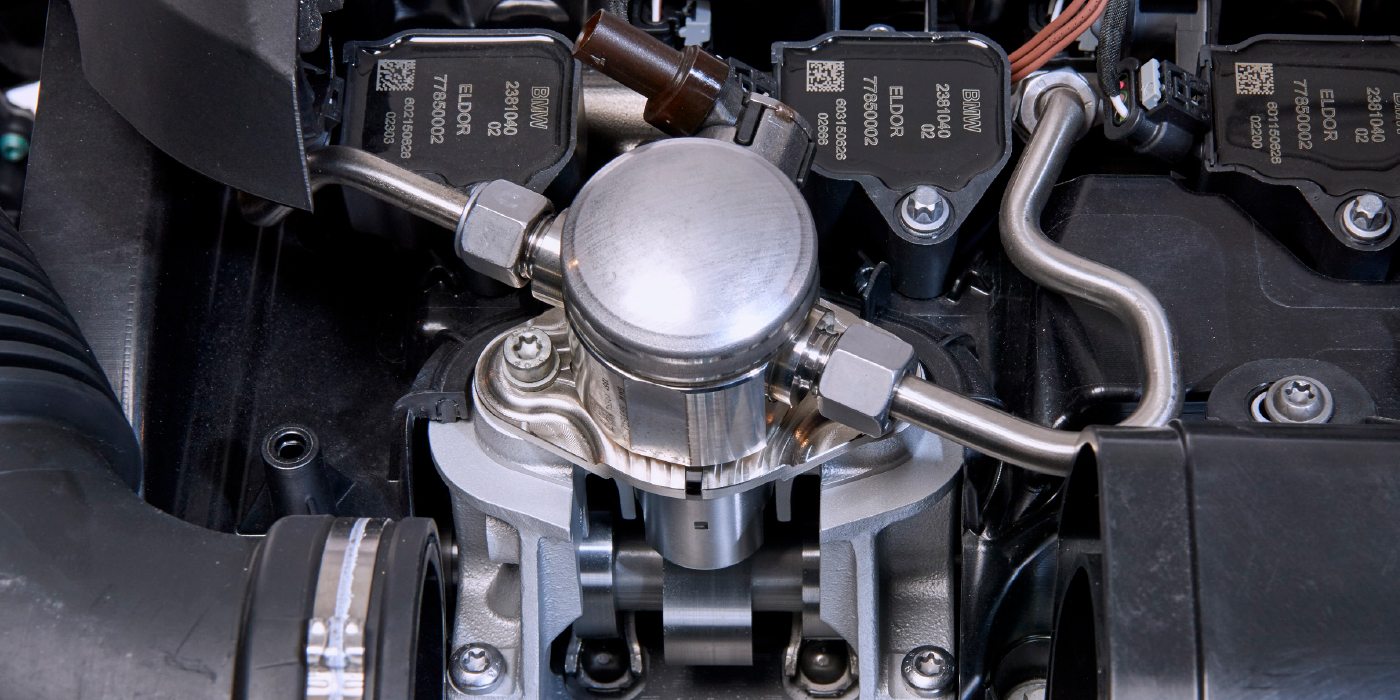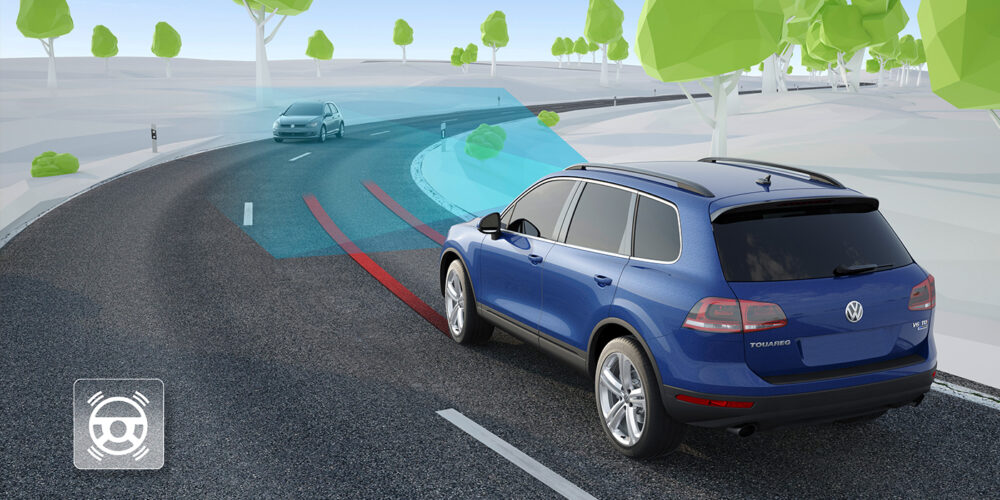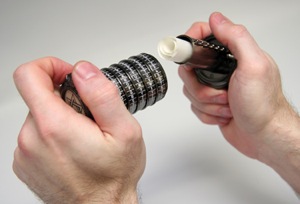 Adapted from Thomas Dayton’s article in Counterman magazine
Adapted from Thomas Dayton’s article in Counterman magazine
The modern 17-digit Vehicle Identification Number (VIN) became mandatory for new vehicles sold in the U.S. beginning with the 1981 model year. The VIN is broken down into six components, and each part holds a key to decoding the identity of an individual vehicle.
The first part consists of the beginning three digits, which tells us what company manufactured the vehicle and in what country.
Known as the World Manufacturer Identifier (WMI), these three-digit prefixes are assigned to each automaker by the National Highway Transportation Safety Administration (NHTSA) for vehicles sold in the U.S.
A parts specialist sometimes needs to determine a vehicle’s country of origin to select the correct parts for a particular application, and checking the first digit of the VIN is a straightforward method of identification. 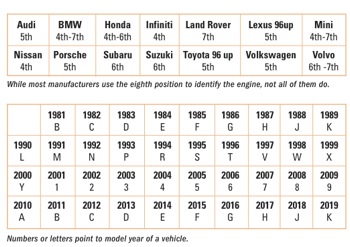
The first digit identifies the country of manufacture, while the second and third tell us the manufacturer and division/car line. With increased globalization of manufacturing, this becomes more important in identifying options unique to certain assembly plants.
For the parts specialist, the most common country of origin codes needed for decoding options are as follows:
1, 4, and 5: United States
2: Canada
3: Mexico
J: Japan
Other country codes the parts specialist might encounter are:
K: Korea (Kia and Hyundai)
S: England (Jaguar and Land Rover)
W: Germany (Audi, BMW, Mercedes, VW)
Y: Sweden (Saab and Volvo)
9: Brazil (Volkswagen)
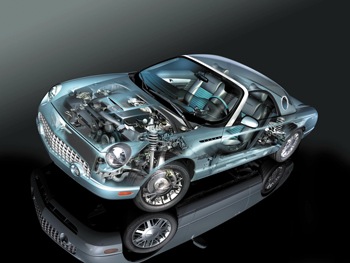 The second section of the VIN is contained in the fourth through eighth digits, and is a little less straightforward. In this section, called the Vehicle Descriptor Section, manufacturers are given the opportunity to encode various information about the individual vehicle, but each manufacturer does things a little differently.
The second section of the VIN is contained in the fourth through eighth digits, and is a little less straightforward. In this section, called the Vehicle Descriptor Section, manufacturers are given the opportunity to encode various information about the individual vehicle, but each manufacturer does things a little differently.
Some companies include emissions information, type of transmission, seat belt and airbag information, engine displacement and body styles.
Now, there’s a common misconception regarding the eighth digit of the VIN. While most manufacturers use the eighth position to identify the engine, not all of them do. Some popular exceptions to this “rule” are in the first chart above.
The ninth digit is called the check digit, and is used mostly by motor vehicles departments and law enforcement for checking the validity of a VIN. This number is calculated using a complex formula that assigns a numeric value to the other 16 digits of the VIN based on their position in the sequence.
The sum of these values is divided by 11, and the remainder becomes the ninth digit. This will always be a number (0-9), or the letter “X.” It is the least useful part of the VIN to anyone working a parts counter, but is still important in the grand scheme of the universe.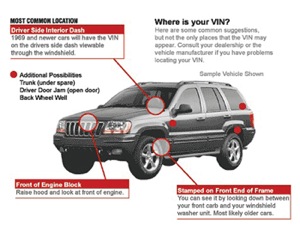
Rounding out our top 10, we come to the model year. From 1981 to 2000, the letters B through Y were used (except for I, O, Q, which never appear anywhere in a VIN, and U, which never appears in the tenth position) to identify the vehicle’s model year.
2001 through 2009 model years use numbers 1-9. 2010 saw the return of the alpha characters, starting with A, and continuing in the same pattern used in the 80s and 90s.
Of course, once a manufacturer starts repeating numbers, it may eventually become difficult to tell if a VIN is from 1983 or 2013.
NHTSA thought of that already, and the key lies in the seventh digit of the VIN. Even though the seventh digit of the VIN can represent a number of things (model or body type, transmission and restraint systems are the most common), for vehicles built through 2009, it must be a number. For model years 2010-2039, the seventh digit will be a letter.
The eleventh position of the VIN takes the place of manufacture to another level, signifying the individual assembly plant.
Sometimes, unique components are manufactured or installed in different plants, and we need to use the eleventh digit to identify which option is installed. Something as simple as a wheel stud and lug nut for a Ford Taurus might require a parts specialist to determine if the car was assembled in Atlanta or Chicago.
For those of you working in stores that mix paint, it is also worthwhile to note that Honda uses assembly plant codes as part of its paint codes. Variant formulas exist for colors, depending on where they were assembled and painted, and this bit of information may make the difference between a “close match” and an “exact match,” as well as the difference between a satisfied customer and an unhappy one.
The last section of the VIN is the sequential serial number that uniquely identifies a particular vehicle. If you’ve ever called the dealer to source a part, chances are they only care about the last eight digits of the VIN.
Based on our breakdown, we know that gives us the model year, assembly plant and the serial number. In any given model year, only one brand Z vehicle with serial number 123456 will roll out of assembly plant X, so those eight digits can only be assigned to one vehicle. In the aftermarket, we would require an entire VIN, since our catalogs cover more than one manufacturer.
While a parts specialist may not use their understanding of VIN numbering every day, and rarely will you be asked to fully decode a VIN to identify a vehicle, becoming familiar with the parts of the VIN will certainly make life behind the counter easier.
From determining which engine option is installed, to verifying the year of manufacture, and even identifying the exact model or sub-model of your customer’s car, there is a great deal of information that can be discovered without ever opening the hood, or even making that trip to the other end of the parking lot in the rain only to find out that the “LX” or “DX” badge you were hoping to find isn’t there anymore.



